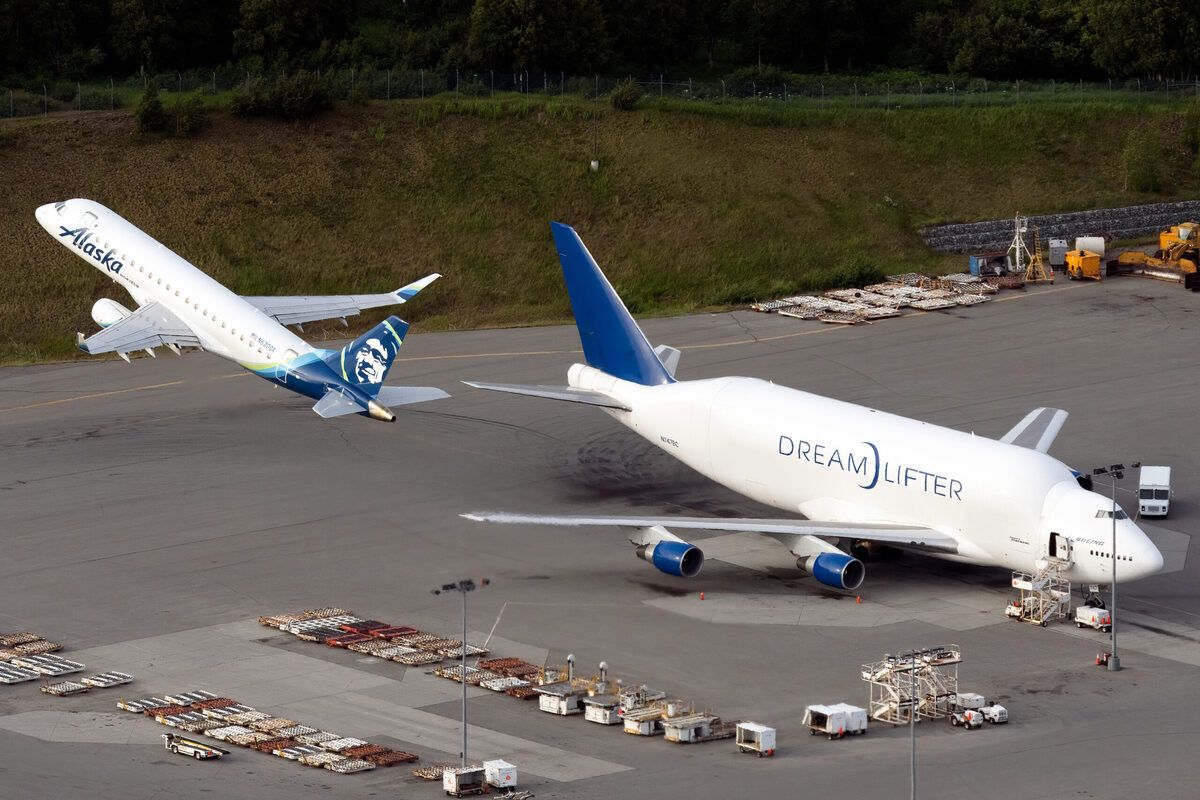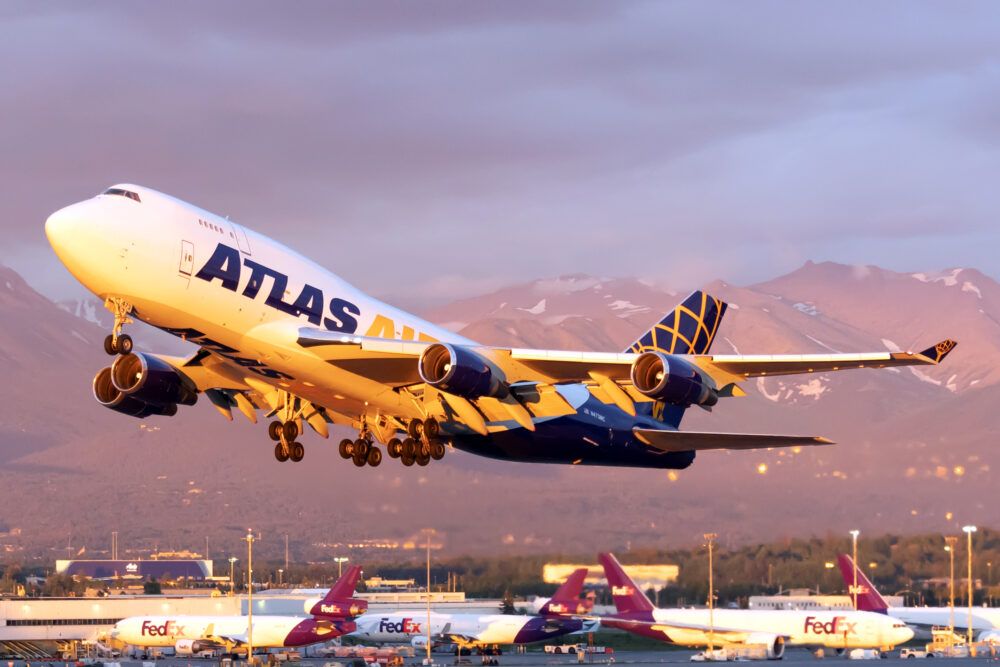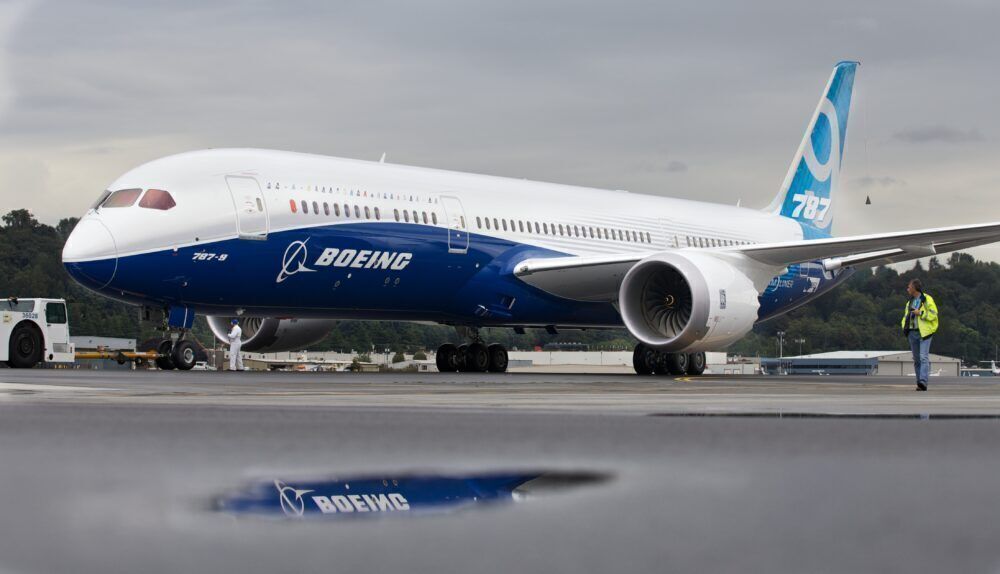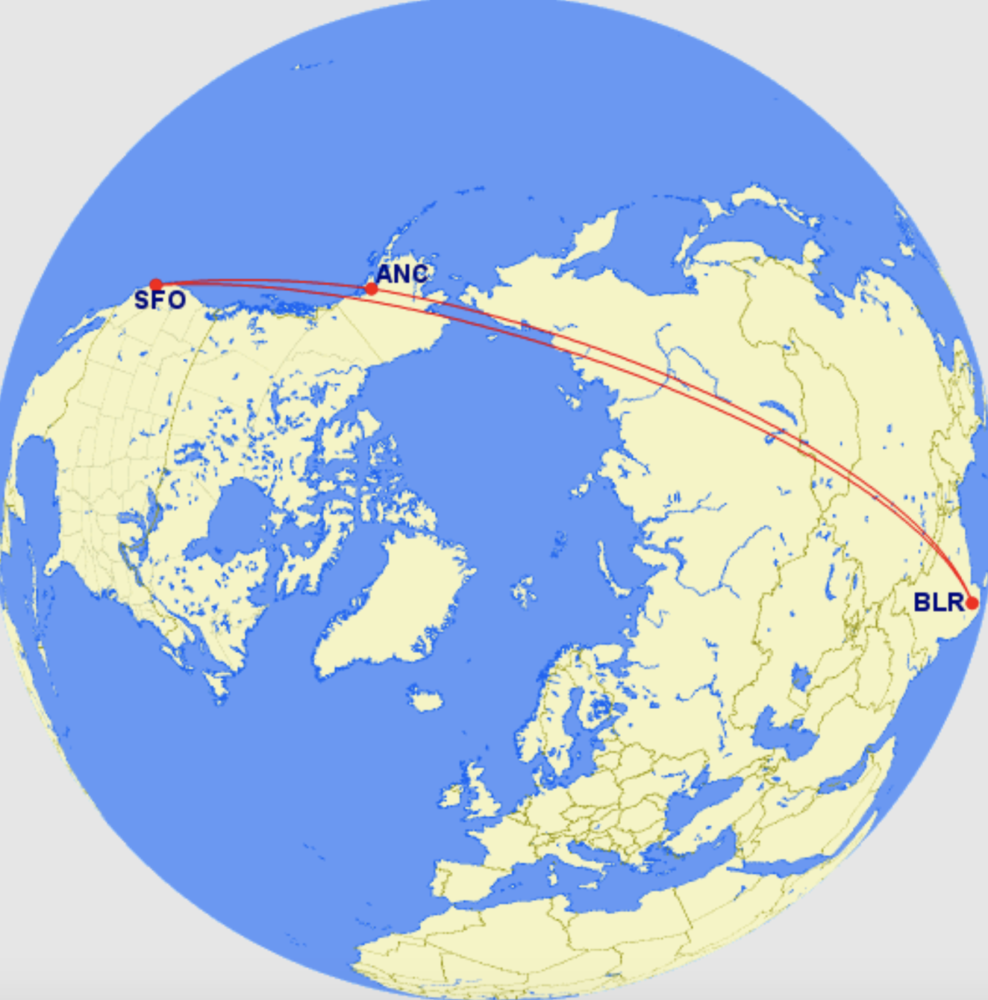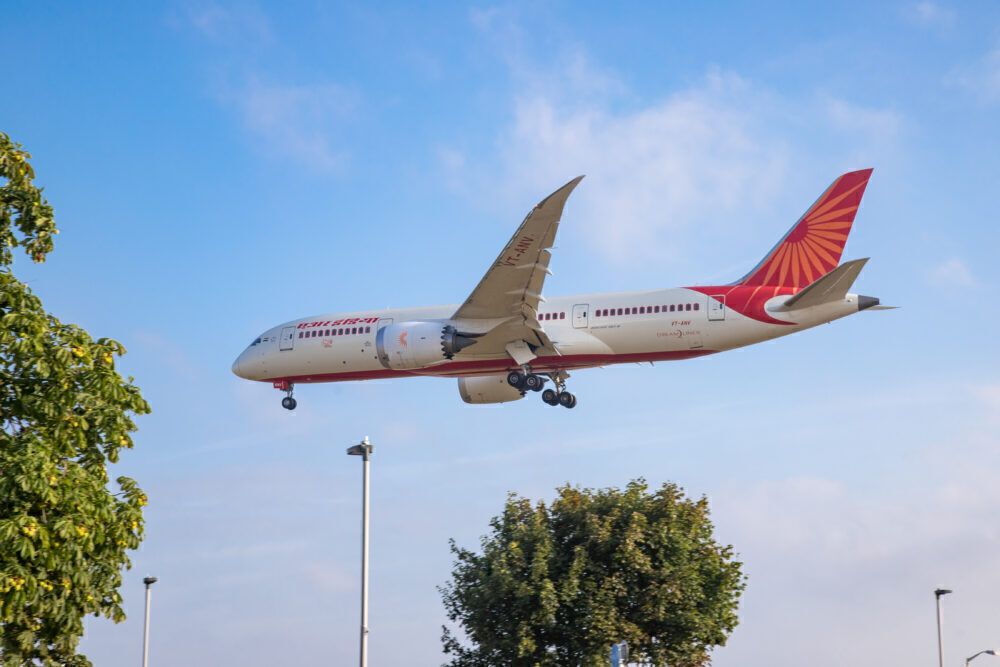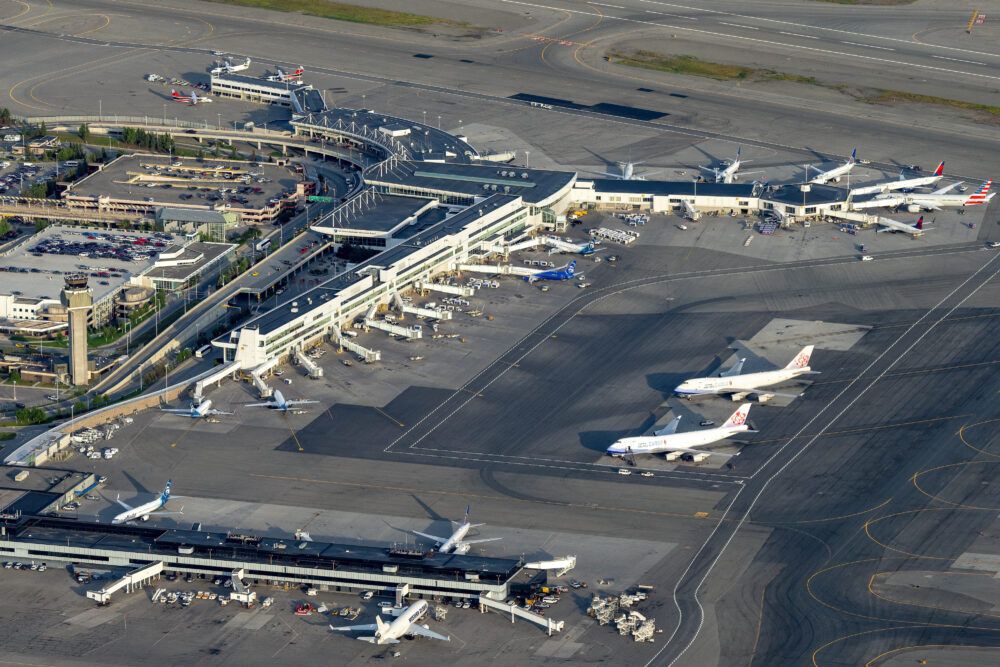Ted Stevens Anchorage International Airport (ANC) does not typically come to mind when one thinks about a connecting hub. While it is a lifeline for connecting smaller Alaskan communities to the rest of the world and is one of the largest cargo hubs in the world, the airport is now turning its sights on passenger operations. In particular, Jim Szczesniak, the Airport Manager at Anchorage, sees potential for the airport to serve as a connecting, scissor-style passenger hub.
Anchorage as a connecting hub
Alaska Airlines is the most prominent carrier at ANC. While it does bring a lot of traffic to and from Anchorage and the lower 48 US states, the airline also uses Anchorage to funnel some connecting passenger and cargo traffic to smaller communities in Alaska, like Nome or Cold Bay, from the lower 48 and the rest of the world.
At one point, Anchorage was an incredibly significant international passenger connecting hub. Until the late 1980s, airlines would route flying from Europe to Asia via a stop in Anchorage. The reason for this was because the then-Soviet Union airspace was closed to many airlines. To work around this and open up travel between Europe and East Asia, carriers routed their flying via a stop in Anchorage.
Turning Anchorage into a scissor hub
Mr. Szczesniak sees the potential for bringing Anchorage back on the world stage for connecting passenger traffic. In late 2020, the airport received permission from the United States Department of Transportation (DOT) for expanded international passenger transfer rights. This gives foreign carriers the same rights as air cargo in Anchorage.
This could have some huge implications for how airlines set up their operations at Anchorage. Mr. Szczesniak envisions the following kind of scenario for bringing passengers from a place like Asia to points in the United States:
"With those transfer rights, you have the ability to do a change of gauge, if you're interested. So you can bring a big plane in here, you slice and dice the passengers, and then you can send little planes into the North American market."
So, unlike many other hubs, an international airline can fly a widebody like a Boeing 777 or Airbus A330 into Anchorage. Those passengers can then connect in Anchorage and move onwards to points in the United States on a smaller aircraft like a Boeing 737 or Airbus A320, creating, essentially, a scissor hub.
The potential extends even further to international markets, according to Mr. Szczesniak:
"Carriers are looking to connect global financial capitals. Well, you have the ability to come in here, and, hub-and-spoke, and then you can send a plane down to Mexico City, a plane to New York, and a plane to Toronto, and you can hit those three big financial capitals."
Basically, the operation would be setting up Anchorage as a secondary connecting hub to allow airlines to add flying to North and South America.
Anchorage is well-positioned to handle it
While major connecting hubs that come to mind include London, Frankfurt, New York, Toronto, Dubai, Doha, and more, one of the biggest factors in making a successful hub is how accessible those locations are to the broader world. For example, on an eight-hour flight from London, a passenger can hit points in North America, Africa, or Asia. But from a city like Sydney, passengers can mainly only hit points in Asia and Oceania within an eight-hour range.
Anchorage is similarly positioned. According to Mr. Szczesniak, the airport has a claim-to-fame where it is within 9.5 hours of flying time from 90% of the industrialized world. That is what helps support Anchorage's prowess as a cargo hub.
More opportunities for airlines
While Anchorage may sound like a great option to create a connecting hub, airlines need an incentive to actually add flying to and from the airport. Mr. Szczesniak sees that potential in the form of belly cargo. He discussed the opportunity of flying passengers from India to the West Coast of the United States:
"From a geographic perspective – India to the West Coast of the United States – [flying to] any of those West Coast destinations from any of the Indian destinations, stopping in Anchorage adds less than 1% to the journey from a flight [distance] perspective."
Airplanes do not fly along straight lines on a map. Instead, they follow the great circle route, which requires many flights between Asia and the United States to overfly Alaska. But while a stop in Anchorage may add a few more miles to the journey, the bigger incentive for airlines is cargo.
"But then [stopping in Anchorage] gives them the ability to carry full belly cargo. You could theoretically have a plane from Bangalore, a plane from Mumbai, and a plane from New Delhi, all three of them arrive at the same time at Anchorage, you swap the passengers, one plane goes to LA, one goes to San Francisco, and one goes to Vegas. That's all possible."
There's another layer to this example. The big three Middle Eastern carriers heavily dominate the India-US market. However, an Anchorage connection could actually help Indian carriers cement a better position than the Middle Eastern carriers:
"A lot of the Middle East carriers basically go in India suck, up the passengers, bring them in the Middle East, and then distribute them. Well, that Middle East to the West Coast of the United States leg – it's too long for belly cargo, also, and it's actually longer to go that way. So if you were to actually go through Anchorage instead of the Middle East airports, it would save you about two hours of flying time, and then you've got full belly cargo at that. So that's a market that we're really trying to look and see if we can get that developed."
One of the biggest benefits for passengers would be the ability to clear customs in Anchorage and land in their final destination in the US as a domestic flight. This would mean avoiding long lines in customs at major gateways like San Francisco, Los Angeles, or Chicago. If passengers are making another connection in any of those three airports to a point in the US, it can be much easier to make it to your next flight when you can arrive directly as a domestic passenger.
Stay informed: Sign up for our daily and weekly aviation news digests.
Could this become a reality?
Already, there have been some murmurs of an Icelandair-style model airline coming to Anchorage. However, the Icelandair-style model is likely the kind of hub-and-spoke that could develop in Anchorage.
The nonstop itineraries between the US and Asia generally arise because of the ease and convenience for the lucrative business travelers. It saves time just flying nonstop from San Francisco to Shanghai than by adding a stopover in Anchorage.
Any model that came to Anchorage in such a fashion would need to be geared towards leisure travelers, who are generally more price-sensitive and may be inclined to choose a cheaper fare flying through Anchorage than flying nonstop. Airlines could also pass on some cost savings to their customers on such an itinerary by making up for lower fares by flying full belly cargo.
Plus, Anchorage is a cheaper international airport than Los Angeles or Chicago or San Francisco, or New York. Coupled with some of the incentives for international flights, there could be an opportunity for a leisure or low-cost carrier to enter the market.
Anchorage, in general, is hoping to boost its international route portfolio. The airport hopes to add some Asian flying, particularly to a major Asian gateway where an airline could offer onward connections. One of the likelier options remains that a oneworld carrier comes to Anchorage and offers onward hub connections on Alaska Airlines, which, though not a scissor hub model, could still give Anchorage that lucrative Asian route.
Ultimately, no major airline has announced plans to develop a hub-and-spoke kind of model in Anchorage. While there is precedent for airlines developing scissor hubs in other countries to funnel passengers, Anchorage has not yet benefited from those kinds of operations.
Do you think airlines should come to Anchorage and build up a scissor hub? Let us know in the comments!

